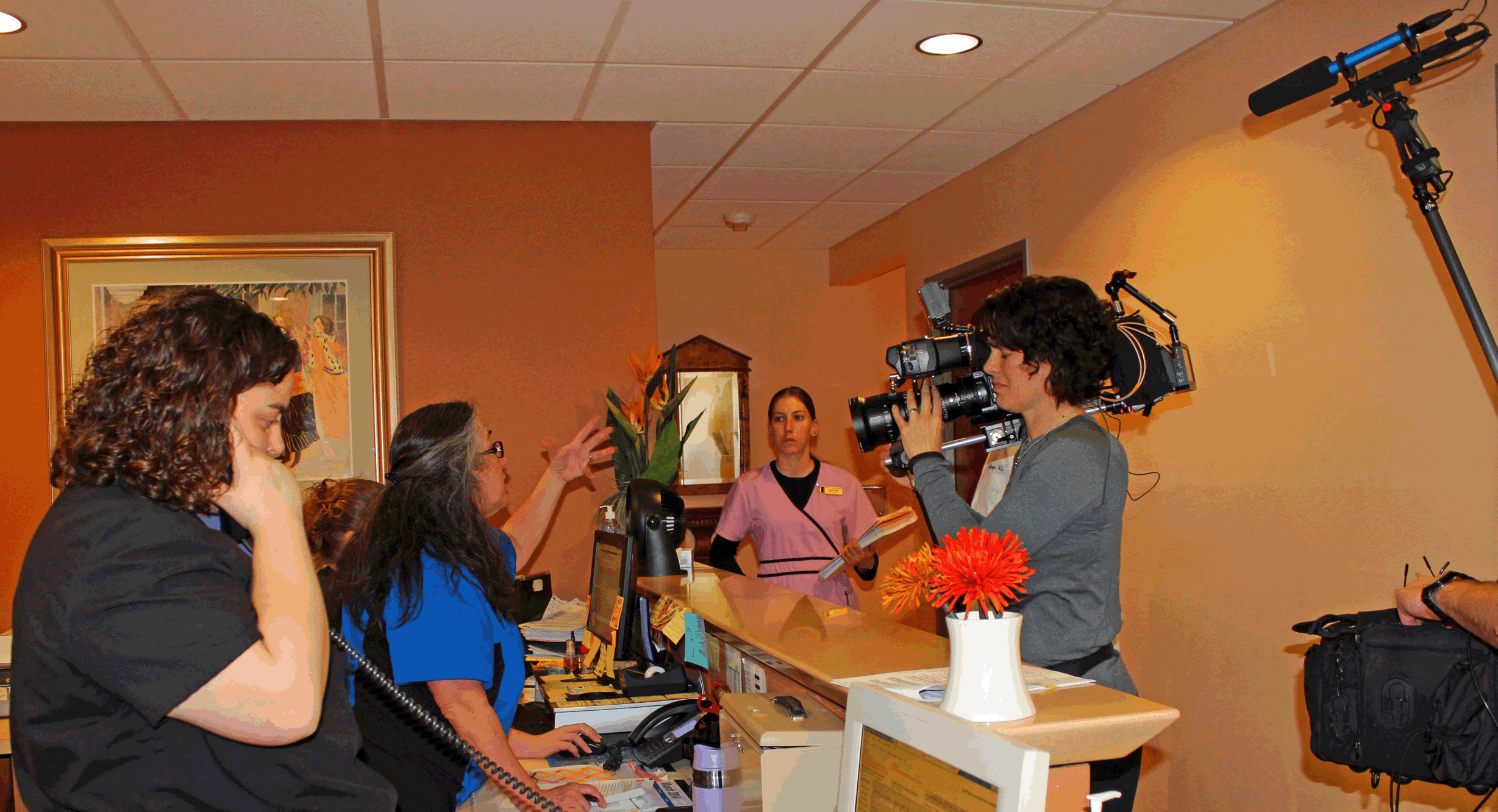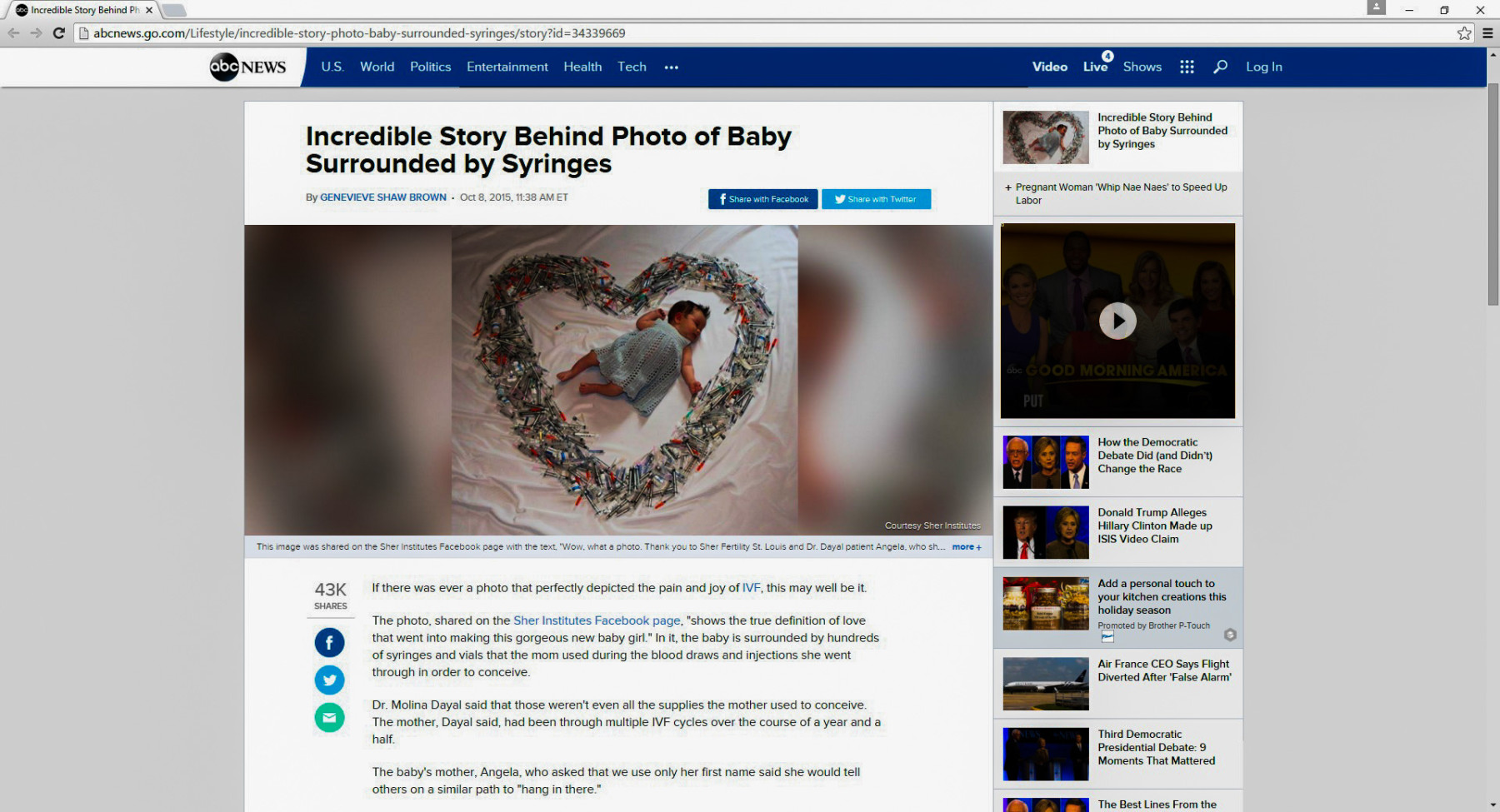The Anatomy of a Media Pitch
Earning free media coverage for your healthcare practice is not complicated. As I articulated in my previous post How to Get Earned Media in Seven Steps, you simply need to abide by a few basic rules to gain free PR for your practice.
The beauty of earned media coverage is layered success. Not only does coverage give your practice credibility via the third party implied endorsement of the media but it amplifies your social media exposure as well. You can take the content covered in the media segment and use it on your web and social sites to further promote your work.
In this post, I will share you with you a few media highlights from my career to establish a backdrop. I will then share with you a recent story I pitched and placed in the Las Vegas media. I will break down what, how and why I did what I did. Hopefully this explanation will help you next time you or your PR firm pitches a prospective story.
As a former TV news reporter who spent 15 years in newsrooms around the country, I have a good sense of what can work as a media pitch. Here are a few past successes I have had placing media:
At Sher Institute, a concept I envisioned became the subject of a documentary film covered last November by the New York Times. Being interviewed by the New York TImes was scary but I survived. Whew. Read More
How to Get Your Healthcare Stories Media Coverage
When I tell people that one of the ways I help build brand awareness is by earning media coverage they immediately say something like, “You must know the reporters. You have connections, right?” Actually, no I do not. I left the television news business 10 years ago and I don’t know many reporters any more. Most of them were in college when I was in the business. I have developed relationships with reporters I have worked with but getting media coverage still comes down to having the right ingredients. Relationships help but other factors are far more important.
In my career, I have been able to consistently earn media coverage. This was in large part because I had great content at my fingertips, stories with a perfect blend of science and humanity. I just had to package the story correctly so the media could appreciate its inherent appeal. In my six years in the fertility industry, we had stories covered by New York Times, CNN, , The Doctors,USA TODAY Network, ABC News and hundreds of other local and national media outlets.. All told more than 500 media placements in six years.
The good news is that with the right approach, media coverage is an attainable goal for all. Here are seven steps to keep in mind when vying for media coverage.
- You have to have a good story. It has to be unique, interesting, relevant and compelling. Reporters get hundreds of pitches across many different mediums. How can yours stand out? By being a legitimately good story. There should be something new or something emotional. It is always best practice to have a real person tied to the story, not just the expert. Make the real person the central focus of the story.
- Equally important to sending them a good story is to make sure you do not send them a non-story or garbage. If you send them a weak pitch, you will kill your credibility. They will unsubscribe, unfollow, untether themselves from you in a big way. An example of garbage is when you want to have your doctor or client on TV as an expert in his chosen field. This is not a story. This is an infomercial. The reporter will not be happy. It is better to not send anything and wait until you have a truly good pitch.
- The pitch needs to be short and pithy. Think two or three sentences at most. It has to be well-written but also as short as possible. Some reporters like to be pitched on twitter. 140 characters and you are out. If you are pitching via email, write your pitch as tightly as you can. Then edit it in half. Again, reporters get hundreds of pitches. The shorter the email the more like they will read it.
- Have a perfect subject line. It should grab their interest, be unique and intelligent but also accurately reflect what the story is about. You can’t write some cheesy, gimmicky subject line and hope to fake the reporter into reading the pitch. Be honest and direct. And be brief. Have I mentioned the importance of brevity?
- Keep it simple. The reporter should not have to think too hard. No disrespect to the media. Most reporters are very quick. But they are also very busy and very stretched. They do not have the time to research or unlock a complicated, convoluted pitch. It should make sense right away. They should be able to sell it to their editor or news director in a single sentence. Think of a news tease. What would it be for your pitch?
- You can have supporting media – photos, videos and links – but make sure it is quality and make sure you only have one or two. Think one great photo or video that brings life to the story. One link that offers deeper explanation. Do not send more than that no matter how tempted you are.
- Do the work for them. Handle the logistics, Explain exactly how the story will work. Lay out all of the elements. If there is additional research to do, do it for them. Yes, I know they also have Google but as we have addressed previously, they are very busy. Hence, the more helpful you are the more likely they are to respond to your pitches in the future.
Good luck! Follow these simple steps and you will have earned media coverage that will make your doctor or client happy. If you want to, you can still tell them you know people.
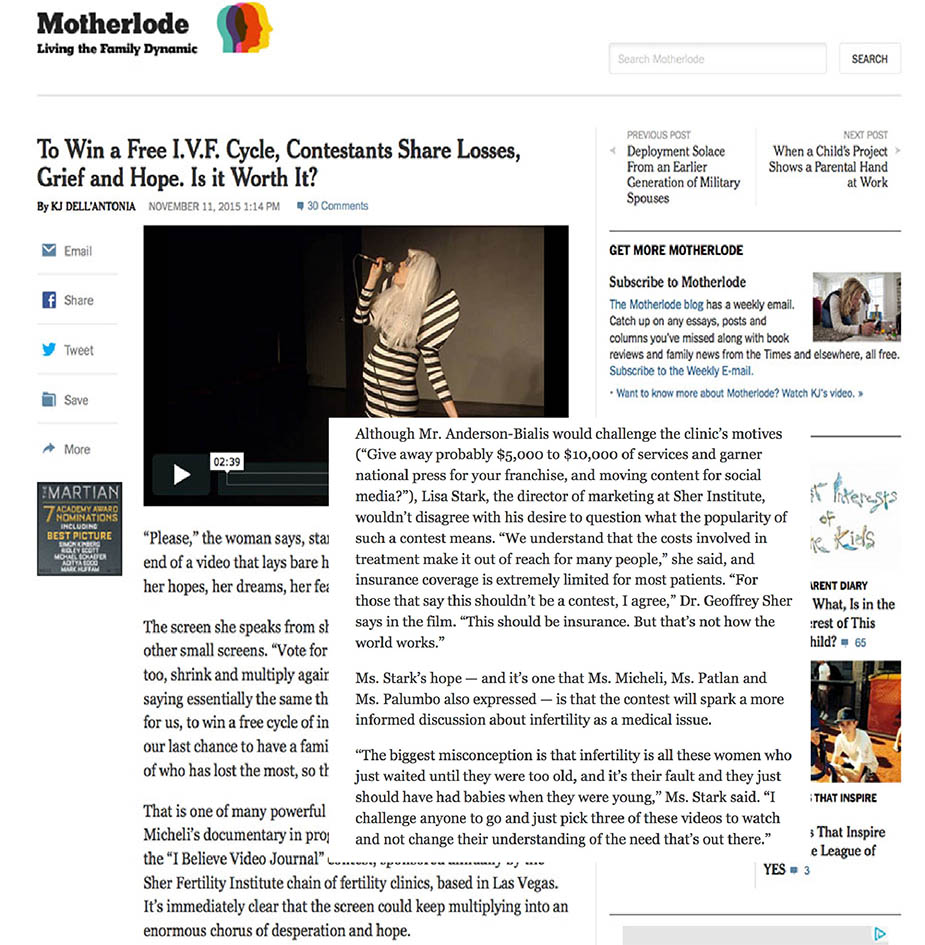
The I Believe Video Journal Project inspired a documentary film by an Academy-Award nominated filmmaker and was covered by the New York Times in November of 2015.
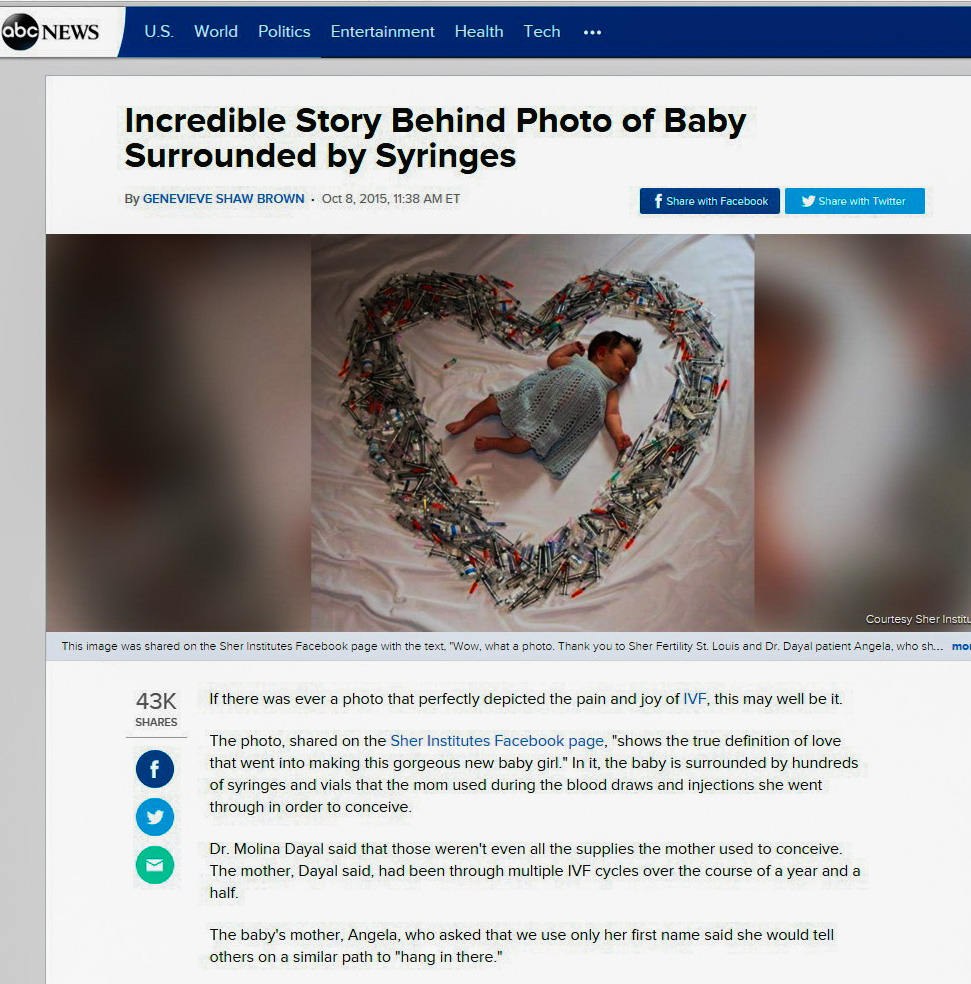
ABC News coverage
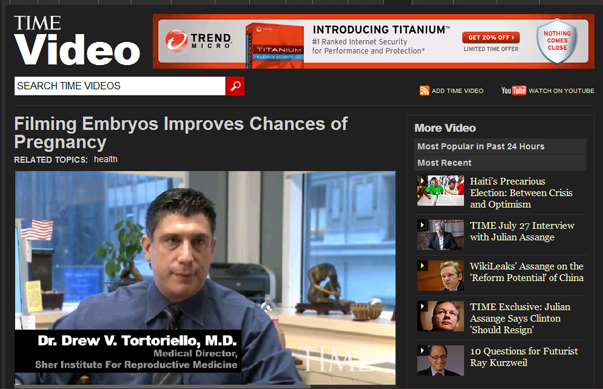
Sher doctor covered by TIME
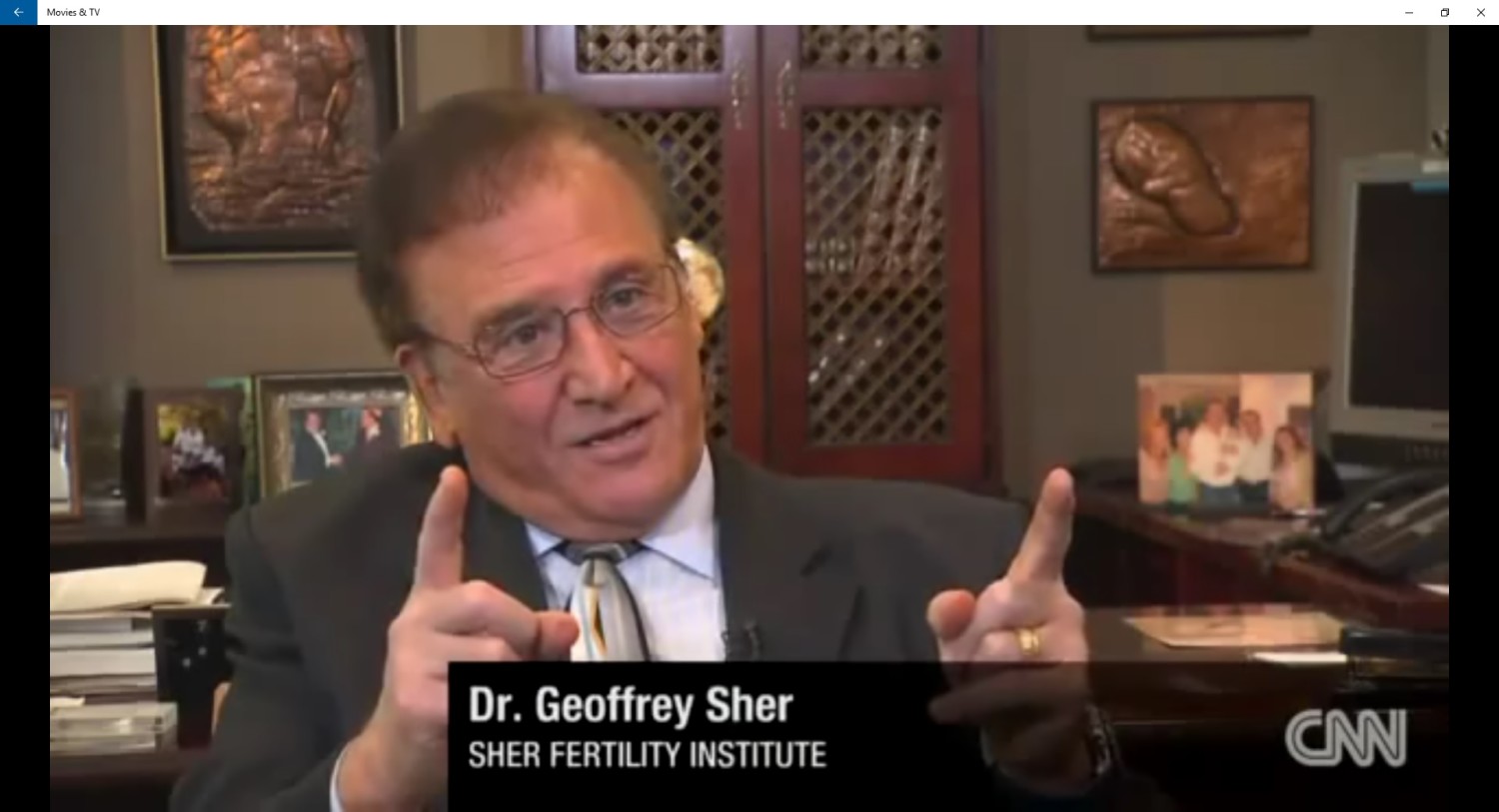
Dr. Sher on CNN
Philanthropy Impacts Healthcare Public Relations
At the heart of a good public relations strategy is a core mission to serve your community while elevating the greater good of society. This is why philanthropy is an integral part of communicating your message and mission. And as a bonus, philanthropy makes you feel good, your staff feel good and everyone connected to you feel good. You feel good too.
This good feeling is contagious in the very best way. Media like to cover a feel good story where the focus is on the philanthropic angle. Your community will be inclined to share this content about your philanthropic activity. So again, win-win.
In order to have a successful philanthropic program, certain factors must be in place. You need to have leadership who truly cares and understands the intrinsic value of giving back. Ideally, the cause or charity you support should in some way connect back to your mission so it makes logical sense. You can choose to align yourself with a nonprofit organization or you can initiate your own philanthropic programs
I had great success with a handful of incredible philanthropic programs at Sher Fertility Institute. The initiatives would not have been possible without the generosity and heart of our leadership and amazing physicians who truly enjoyed giving back.
Every year Sher hosts the I Believe Video Journal Project. Prospective parents submit a video sharing why they should be given a free IVF cycle. Dozens of babies have been born through the project. How can you not get goose bumps when you see this face?
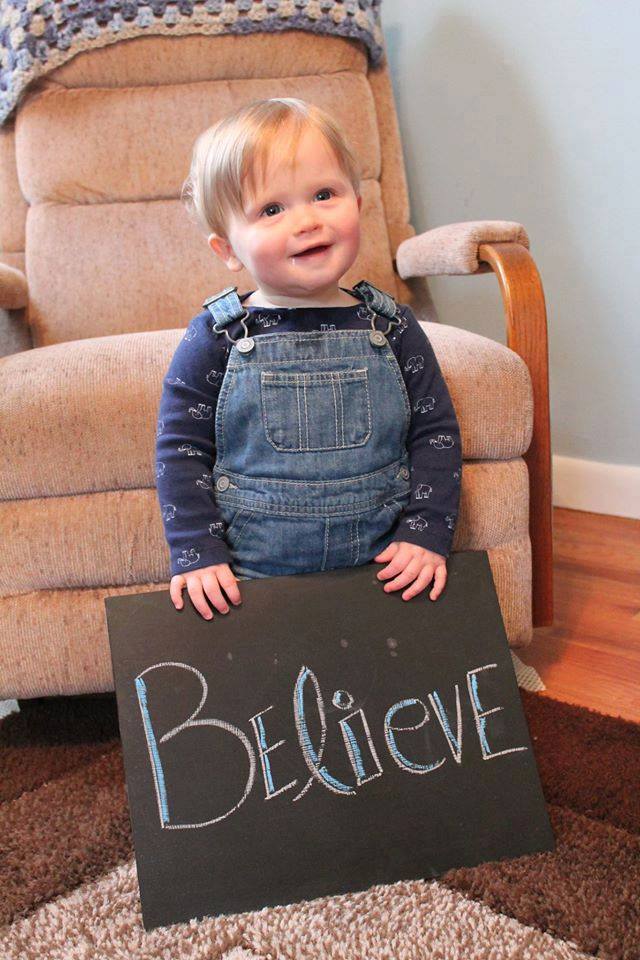
Meet Leo – born to parents Chris and Jennifer who won a free IVF cycle through the philanthropic I Believe Video Project
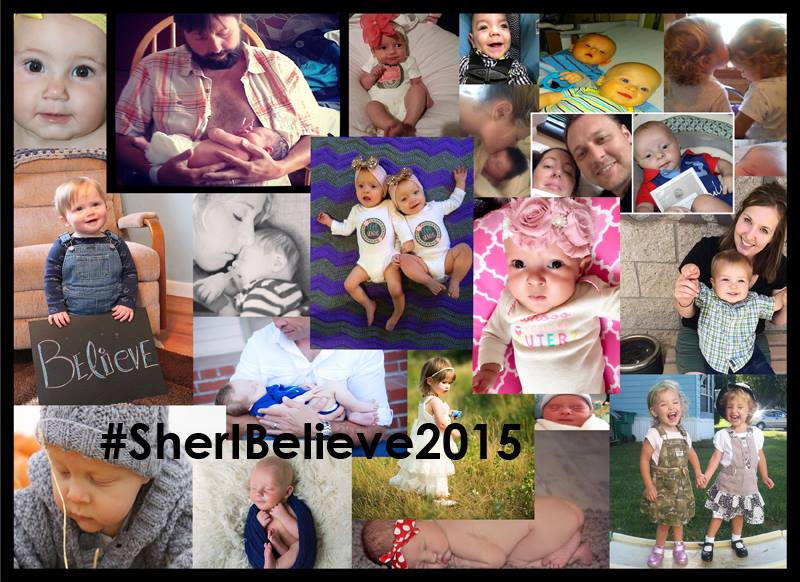
Oh by the way I Believe sparks huge engagement on social media, brings traffic to the site and leads to national media coverage on CNN. And as a crowning achievement, the project is the subject of a documentary film by an Academy-Award nominated filmmaker and covered in the New York Times.
At educational seminars around the country Sher donated a free IVF cycle (worth about $12,000) at every event. Many couples had babies as a result of these donations. Couples who never would have been parents without this gift.
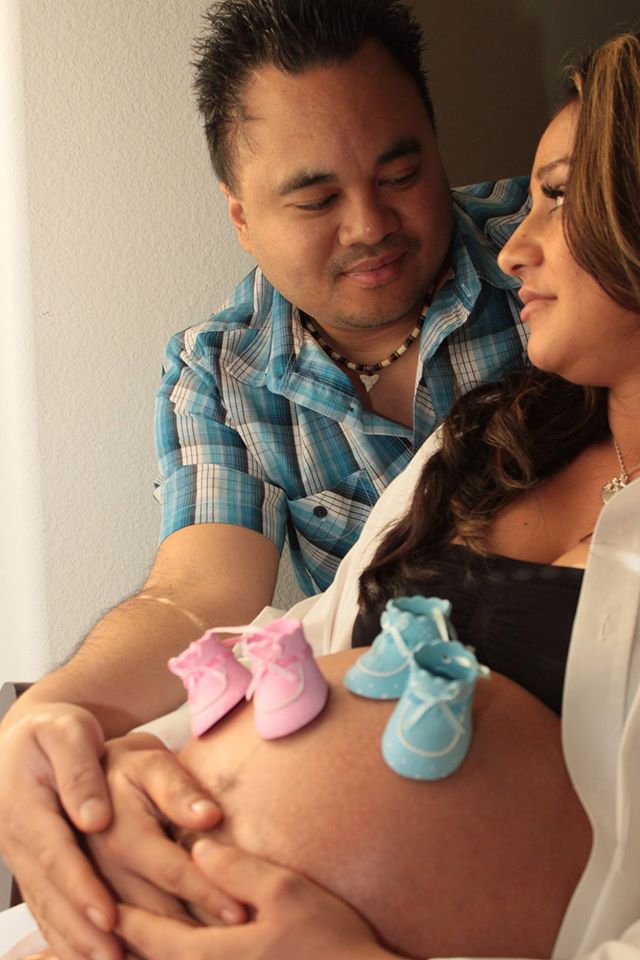
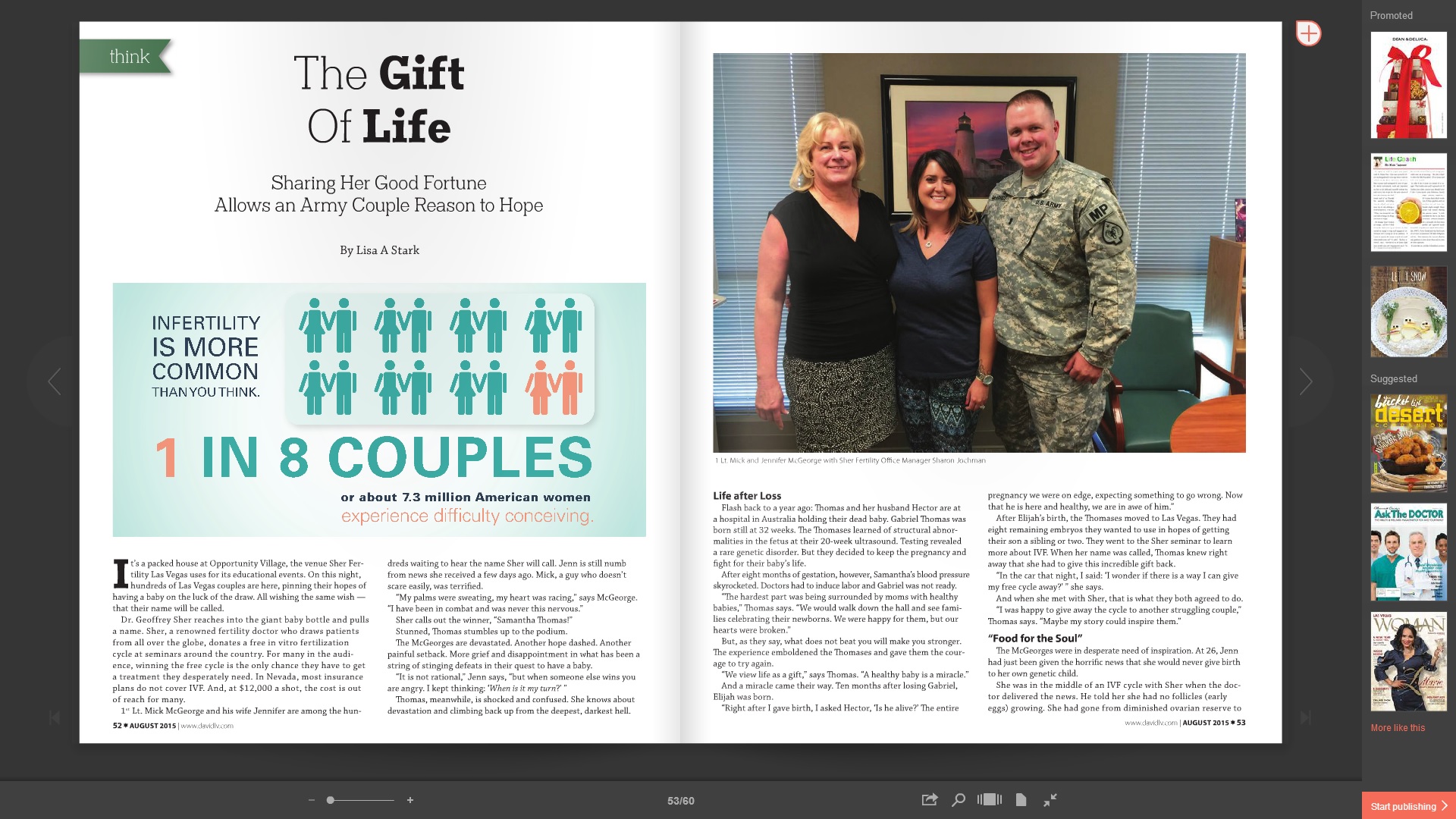
Again, thanks to the incredible generosity of Sher doctors and leadership, Sher also donated free egg freezing services for women undergoing chemo who wanted to preserve their fertility. Many women touched by the programs shared that freezing their eggs gave them hope for the future. And what could be better than that?
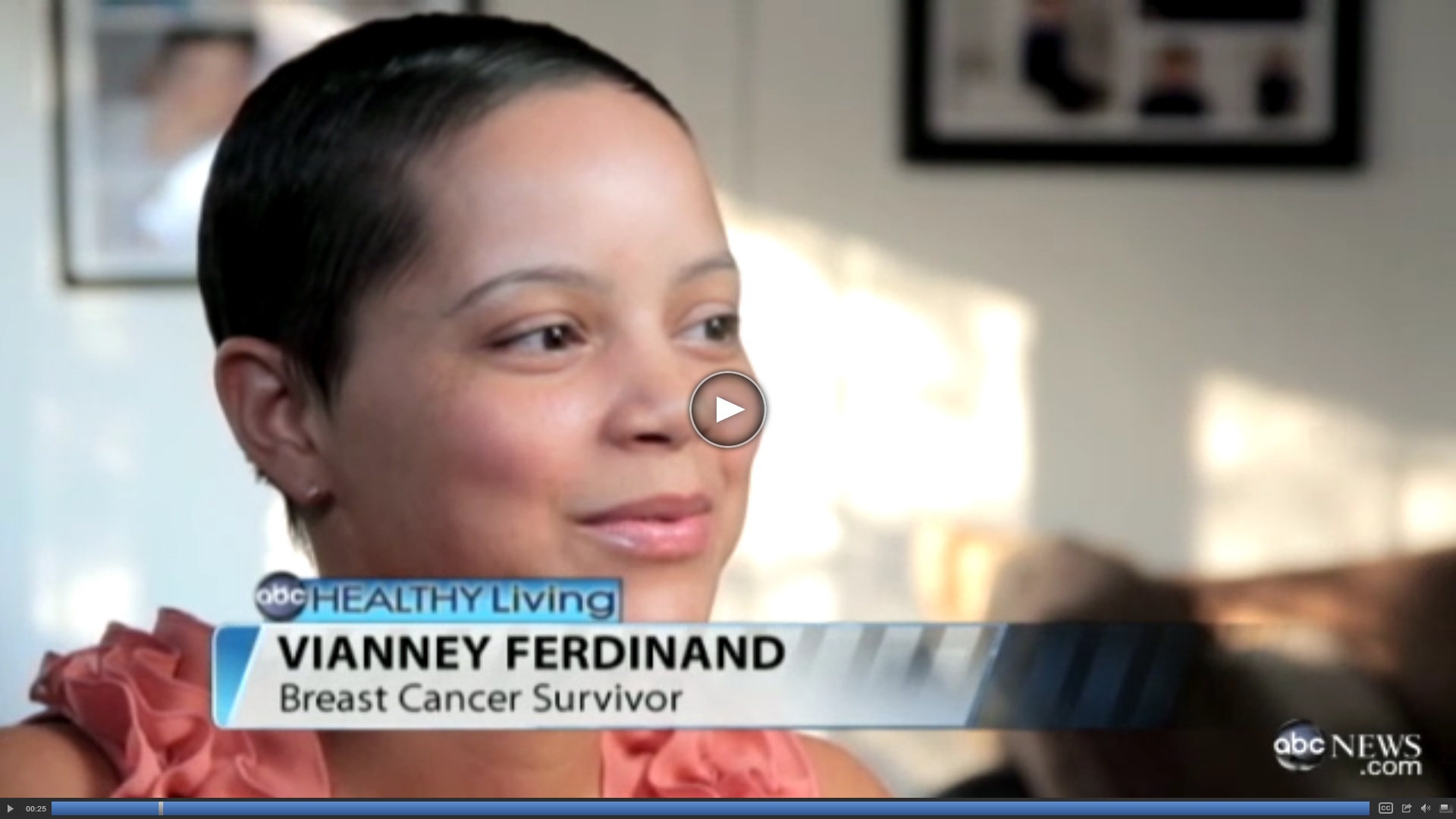


Healthcare Content Development
The synergistic effect of all the marketing channels working together to build relationships and connect communities inevitably leads to growth of brand awareness and potential reach for your healthcare organization.
Growth occurs through social media. Look at how Stark Media positioned Abrams Eye Institute to consistently show greater engagement than competitors.

Using organic grassroots channels such as earned media also help elevate a doctor’s profile. Here is an article in Vegas Seven Magazine’s Top Doctor’s Issue about the groundbreaking surgeries performed by Dr. Tim Tollestrup.
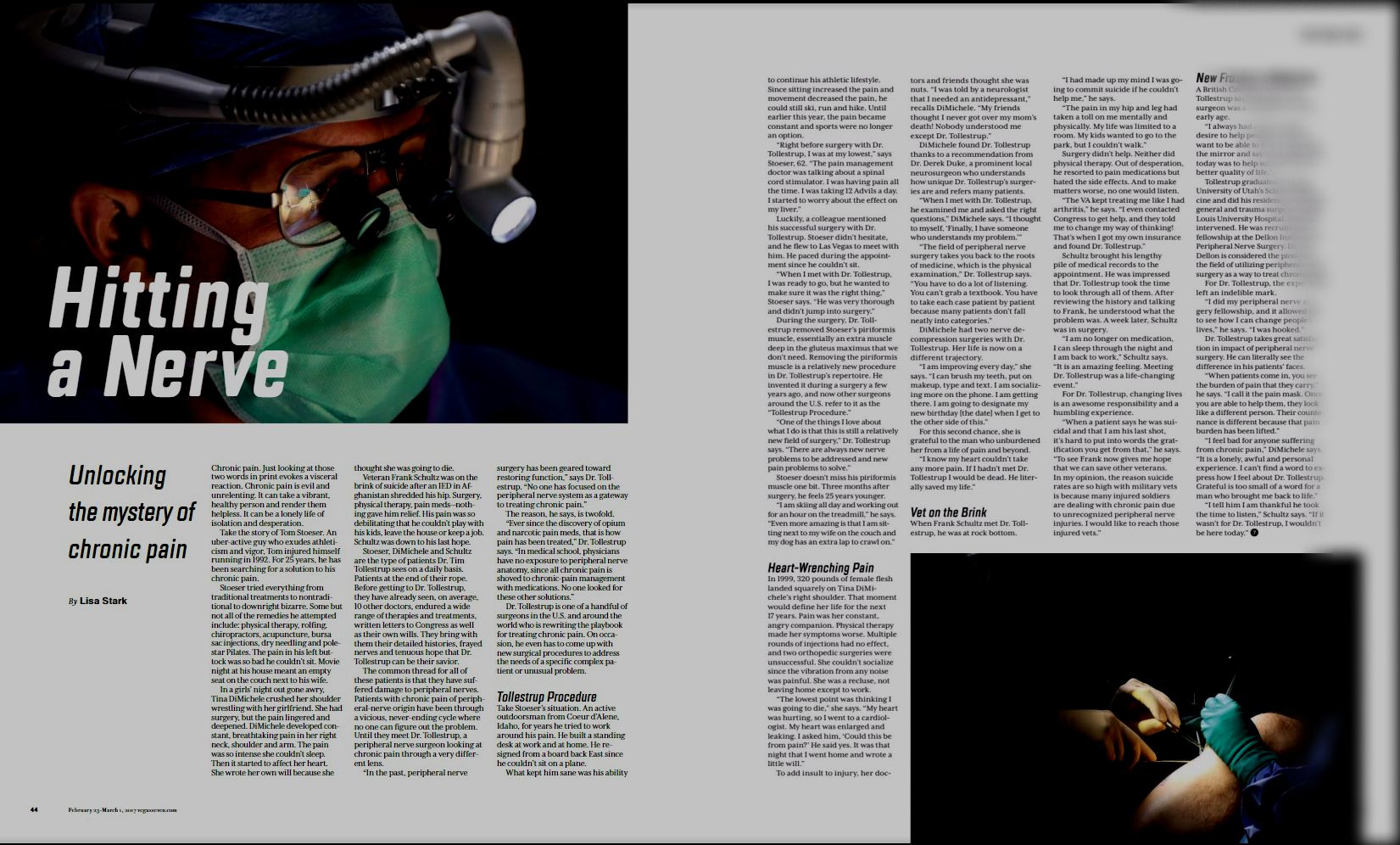
Stark Media conceptualized the idea to host on the Sher website a national video contest wherein prospective parents from all over the world submitted video journals chronicling why they deserve a donated IVF cycle. This philanthropic initiative, the I Believe Video Journal Project, sparked record engagement on social channels, increased web traffic dramatically (222%) and led to national news coverage on CNN and Time. Most significantly I Believe is the subject of a documentary film , by an Academy-Award nominated filmmaker.
I Believe was recently covered in the New York Times. “Ms. Stark’s hope is that the contest will spark a more informed discussion about infertility as a medical issue.” Nov. 11, 2015.



